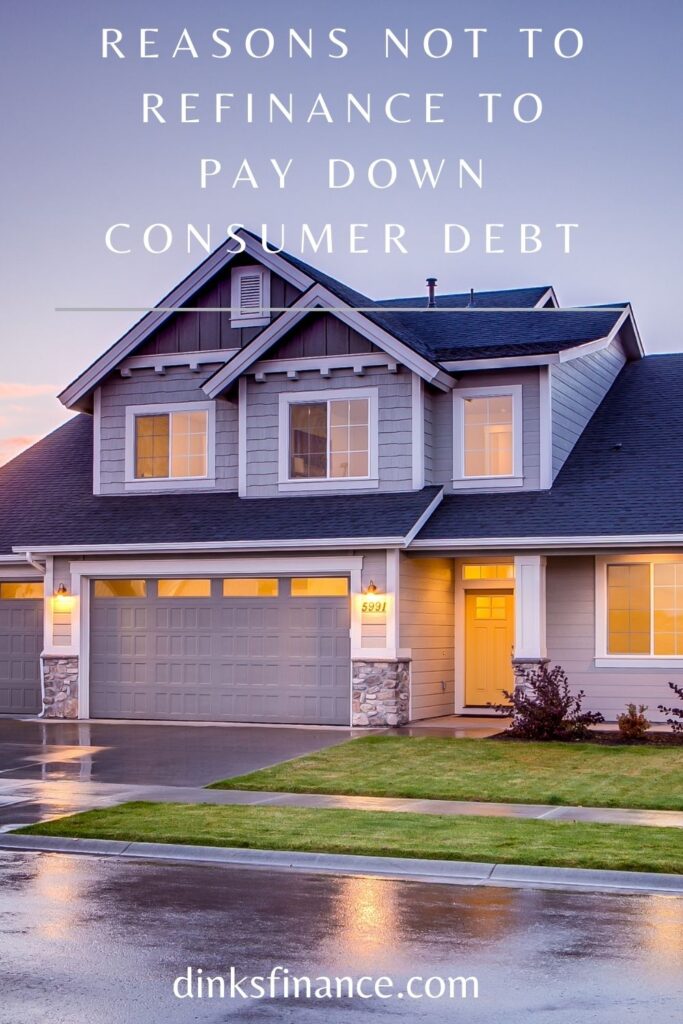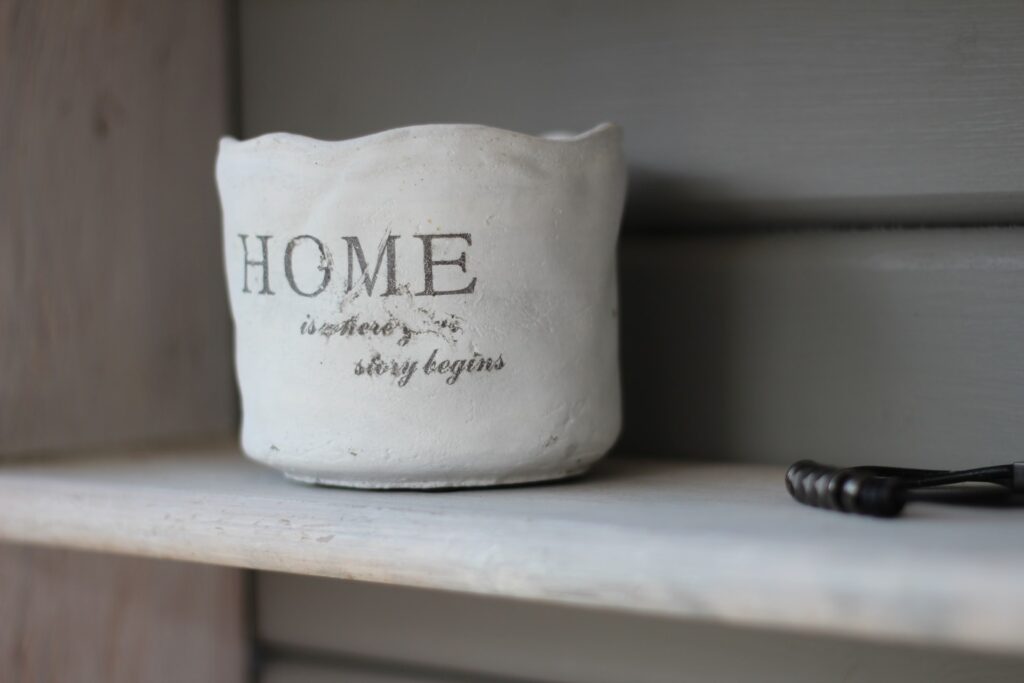.
About 15 months ago, we decided to refinance our home. The interest rate was lower than when we had bought our house six years earlier, and our house had appreciated enough that we could drop PMI (private mortgage insurance) when we refinanced. The mortgage broker working with us asked if we wanted a cash-out refinance to pay off debt. Our answer was a hard and fast “no.” We had several reasons why we didn’t want to refinance to pay off consumer debt.
How Much Can You Withdraw in a Cash-Out Refinance?
When you apply for a cash-out refinance, you can take out the difference between what you owe and 80% of the value of your home, minus the cost of refinancing. For instance, let’s say your house is worth $325,000, and you owe $175,000. Eighty percent of your home’s value is $260,000. Subtract $260,000 from your $175,000 balance, and you can cash out approximately $85,000, minus the cost to refinance, which is roughly three to six percent.
Why You Shouldn’t Refinance to Pay Off Consumer Debt
Just because you can utilize a cash-out refinance doesn’t mean doing so is the smartest money move. For instance, we have some residual credit card debt from medical treatments a few years ago. Getting rid of that credit card debt would have been nice. However, we didn’t find the benefits of paying off our consumer debt worth the risks and drawbacks of a cash-out refinance.
Extend Debt for Years
The first reason why we said no to a cash-out refinance is that having one would extend our debt for years. We acquired substantial medical debt five years ago. Now, the balance is less than 1/3 what it was originally. In five years, we’ve paid off 2/3rds of the balance. We will likely finish paying it off in the next two years.
However, if we rolled this debt into our mortgage, we would be paying it off for the next 20 to 30 years, not two as we expect now. No thanks.
The Cash-Out Refinance Loan Usually Has a Higher Interest Rate
If you choose a cash-out refinance over a traditional refinance, you’ll likely pay more because you’ll have a higher interest rate on your loan. The bank is taking a larger risk with this type of loan, so you pay more. While you may only be paying half of a percent more on the loan, over the course of 30 years, that equates to potentially tens of thousands of dollars.
Can Go Further into Debt
Another reason to avoid a cash-out refinance is that going back into debt is easy. All your consumer debt is rolled into your mortgage, leaving you with open credit lines with no balances.
If you haven’t changed your behavior or examined the root cause of your debt, you could accrue debt again. Then, not only would you have consumer debt once again, but you would also have a higher mortgage because you previously rolled your consumer debt onto the mortgage.
Your Home May Be at Risk

Finally, by choosing a cash-out refinance, you increase your mortgage debt substantially. You are changing your unsecured credit card debt to secured mortgage debt. If you can’t pay your mortgage at some point, you risk losing your home.
A smarter option is to leave your debt as consumer debt and have a traditional refinance. Then, if you can’t pay your consumer debt at some point, only your credit score is affected, or, if worse comes to worst, you file bankruptcy. In this case, as long as you can make your mortgage payment, your house is safe.
Better Ways to Pay Down Your Consumer Debt
Instead of taking out a cash-out refinance, there are better ways to pay down your consumer debt more quickly.
Use the Money Saved from the Refinance to Pay Down Debt
If you have a traditional refinance, you will likely have a lower mortgage payment. You can use the difference between the old mortgage payment and the new one to pay down debt. When we refinanced, we were able to drop the PMI. We also refinanced for a 30-year mortgage, so between the two, we are now saving $230 a month. We use that money to pay on the medical debt, which is making the balance drop quickly.
Sure, we’re currently paying more interest on the consumer debt than we would have if we had a cash-out refinance, but that is only temporary. If we pay off this debt in a year or two, we’ll have no more debt versus if we rolled it into our refinance and had to pay on the debt for 30 years.
Get a Debt Consolidation Loan
Another option is to get a debt consolidation loan. Your local bank or credit union may offer these. You’ll likely qualify for a loan if you still have good credit. Interest rates are typically between eight and 11 percent, and you’ll have a fixed monthly payment. Most loans have a duration of three to five years.
Transfer Debt to a Zero Percent Interest Credit Card
Another option is to apply for a zero percent interest credit card. Sure, you’ll likely have to pay a balance transfer fee of two to four percent, but then you’ll be paying zero percent interest on your balance for a limited time, usually 12 to 18 months. While you may not be able to pay off your entire balance in that time, when the zero percent APR period expires, transfer the balance to another zero percent card until the balance is paid off.
Final Thoughts
While taking a cash-out refinance to pay down consumer debt may seem like a good idea, keep in mind there are long-term repercussions. For many, the risks are too large for the reward. Instead, use one of the other techniques mentioned to pay down your debt. You’ll be glad you did, especially as you watch your mortgage balance drop month after month.
Read More
When Should You Refinance Your Home?


No Comments yet!